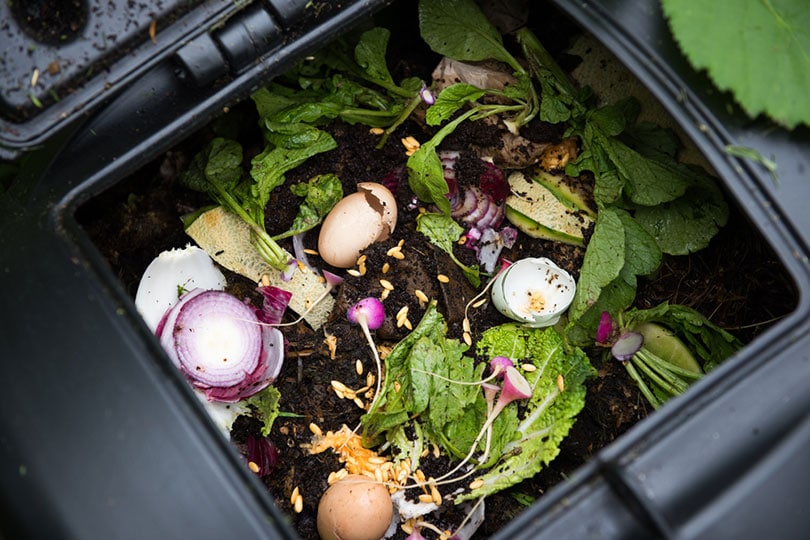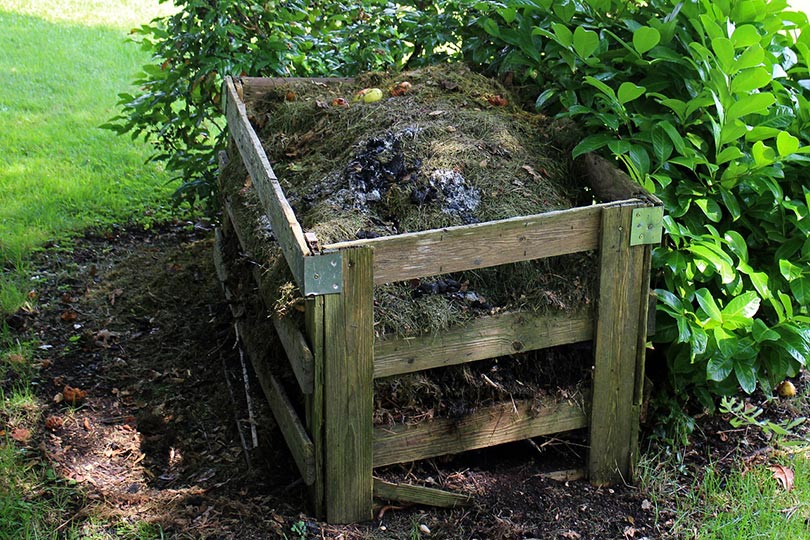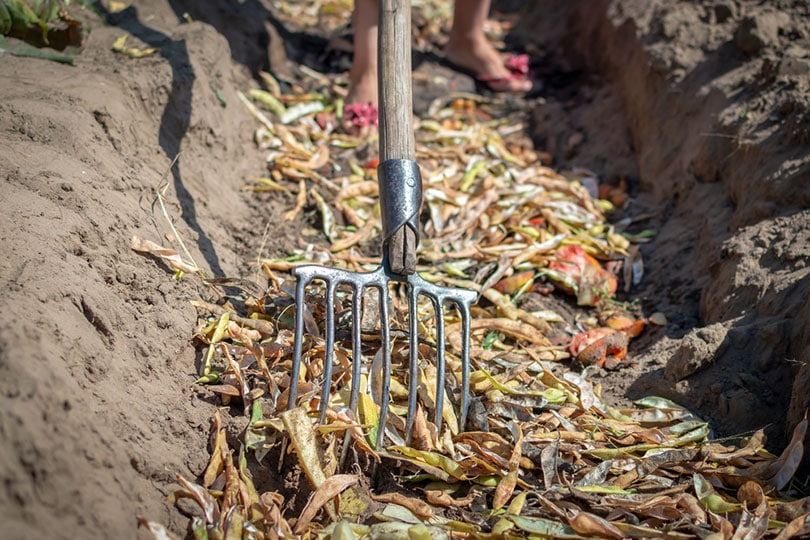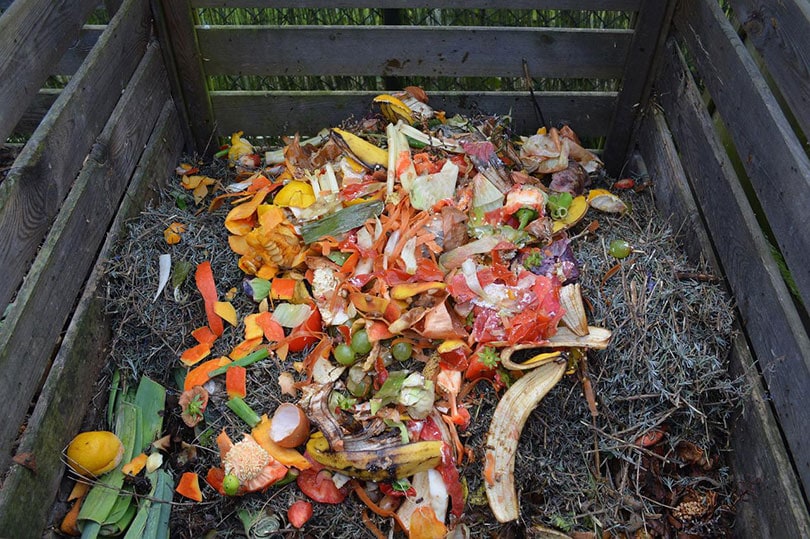What Is Composting and Why Is It Important? Basics & Benefits
-
Pete Ortiz
- Last updated:

Composting comes up more and more often in modern conversation. It is an important talking point for people trying to live greener lives. Composting can serve as an essential part of any homesteader or prepper’s arsenal. Composting also remains a popular activity undertaken by gardeners. But what exactly is composting? How does composting work? Why is composting so important?
This comprehensive guide will go over the basics of composting, the various benefits of the composting process as well as the various different types of composting. There is a lot more to this natural process than simply piling up food scraps in a garden. Composting is an ancient art that remains a large part of modern science and business to this day.
Composting Basics
Composting harvests the natural decomposition process of organic material and makes it work for people’s benefit. Every living thing will decompose eventually. Composting is simply the cultivation of the natural decomposition process in order to create organic soil for use. Composting has a variety of benefits, and it only takes a few ingredients to make it work.
- Water
- Green waste
- Brown waste
Many composting piles also need air, but it is not necessary. There are types of composting that can happen without any oxygen at all.
Composting takes things that would have normally been thrown away and allows them to decompose into organic material that can then be used as fertilizer or soil for agricultural purposes. Anyone can start a compost pile as long as they have the three necessary ingredients to make it work.

Benefits Of Composting
There are many different benefits of composting that go beyond simply creating organic fertilizer. Composting is a natural process that helps break down organic material in the wild to keep various life cycles running. Composting can help save water, help fight climate change, and help keep your soil as natural and healthy as possible. Do not sleep on the benefits of composting because they can be substantial.
Creates More Natural Soil
Natural soil has a lot of benefits for plants. If there is a lack of natural soil, people like to substitute it with store-bought soil. Potting soil from the store might not blend well with your native soil. Native soil has microscopic organisms, fungi, and nutrients that are specific to your individual area. Adding non-native soil might throw off the balance of your current soil. Compost creates soil that is filled with extra organic material as well as native microorganisms from your specific area. All of this will benefit any plants that you are trying to grow.

Reuses Food Waste
Food waste is a major source of garbage in the United States. When people throw away uneaten food, it adds material to landfills. Not only does this organic material fill landfills faster, but it also contributes to methane production in landfills. Composting helps reuse this food waste so it can be returned to nature instead of rotting in a landfill. With a compost pile, you can put your food waste back to good use. Without compost, every scrap of food waste people produce will go straight to the landfill.
Reduces Atmospheric Methane
Landfills are one of the largest contributors to atmospheric methane. As the materials inside landfills break down over time, they release an astonishing amount of methane. Everyone likes to talk about cows when it comes to methane but throwing trash out also contributes in a serious way. Methane is a serious greenhouse gas that can have an adverse effect on climate change.
Composting removes items from landfills which in turn reduces the amount of potential methane from said landfills. The more people compost overall, the less methane will be put into the atmosphere over time. On a large scale, that can reduce the potential for climate change due to greenhouse gas emissions.

Saves Water
Soil that has higher levels of organic material retains water much better than soil that does not. Compost adds significant levels of organic materials to the soil. That means that gardens or farms that use organic compost as a soil additive will use significantly less water than farms that do not. Soil treated with natural organic compost can save as much as 20,000 gallons of water per acre for large-scale operations. That kind of water savings can add up over time to save money as well as help reduce water usage worldwide.
Types of Composting
Most people think that there is only one kind of composting. The typical person imagines a small garden compost pile, and that is it. But there are five different methods of composting recognized by the EPA, and many of these methods scale to absolutely gigantic proportions. Gardeners are not the only ones who compost. The government composts, large farms compost, and food businesses compost. They all use various methods of composting to get the job done. Here are five different types of composting you should know about.

Onsite
Onsite composting is the most basic type of composting. This denotes small piles that are kept on-site at people’s homes or outside of small businesses. An onsite compost pile is recognized for its ability to be placed almost anywhere. A typical backyard compost pile or dumpster compost pile in an alley would be considered an onsite compost pile. If a compost pile does not need any extra space or attention, it will be classified in this category.
Vermicomposting
Vermicomposting is a process of composting that utilizes worms instead of simply letting nature take its course. Worms feast on compost materials and speed up the process. Worm droppings are extremely valuable fertilizers, and the combination of the droppings plus the worm’s daily behaviors creates a richer and faster composting experience.
Vermicomposting requires more attention than standard composting because the worms need a specific balance of environment and materials to thrive. If the environment is not maintained properly, they will die, and your vermicompost will revert to a standard compost pile.
Vermicomposting can be done indoors with very small containers that only hold a few worms. Vermicomposting can also be done outdoors in large containers with multiple worm colonies coexisting at the same time.
Aerated Windrow
Aerated windrow composting takes the composting process to an industrial scale. This type is typically used by large operations that produce a ton of food waste. Windrow composting is done by farms, packing plants, and entire communities. The waste is taken and put into large windrows that are periodically turned to get oxygen into the dense piles. This process produces a large volume of compost which is usually then returned to an industrial food process.
The EPA says that these piles can be as wide as 14 feet and as tall as 8 feet at their largest. That is a lot of compost.
Aerated Static Pile
An aerated static compost pile is similar to a small onsite pile that homeowners typically tend to just on a larger scale. Aerated static piles are used by farms or professional landscapers. They do well with a good mix of organic material. These piles can be as high as ten feet. Typically, a farm or landscaper will keep one giant pile of compost that they add and subtract from periodically. Aerated static piles are a cold composting method that can take up to six months to produce good amounts of usable compost.
In-Vessel Composting
In-vessel composting is composting that uses a specially designed container to help facilitate the process. Professional composting vessels range from massive steel cylinders to special concrete trenches that are engineered to be watered and aerated on a massive scale. If you use an old trash can or tumbler for compost, you are technically partaking in in-vessel composting. In-vessel distinguishes between outdoor piles. Even the aerated windrow and static piles are simply kept outdoors without any type of containers.
Hot vs. Cold Composting
The different types of composting can be broken down into two categories, hot and cold. Hot composting is also known as active composting. If the process requires you to add regular inputs or keep a specific balance, it is considered hot. The name comes from the fact that more active compost piles generate more heat, and the center of these piles actually gets hot. Hot compost piles compost materials faster and have less risk of pests or fungus growing in or on the piles. However, it takes a lot more effort and knowledge to pull off.
Cold composting is also known as inactive or inert composting. This is the type of composting that most homeowners participate in. Cold composting occurs in a single pile that people add to periodically without tending to it. Cold composting takes place at a lower temperature and a slower time frame than hot composting, but it is much easier to do as a typical person. Any garden or kitchen compost bin that gets turned every few weeks and has scraps added to it would be considered a cold compost pile.
Conclusion
This guide has everything you need to know to get started composting at home and about composting in general. Composting is a simple natural process that has been used in a variety of different ways to help various different businesses. Composting has evolved from simple backyard piles into massive industrial operations that help produce tons of good organic compost. But no matter how big or complex a composting operation gets, it is all based on the very simple principles covered here.
Featured Image Credit: Antranias, Pixabay
Contents



